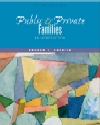EXERCISE 1 The Ameristat web site, (www.ameristat.org), offers a number of interesting charts and graphs about the elderly population in the United States. Most of the data can be downloaded in tabular form. Click on "older population" to answer the following questions. What happens to the marriage gap between elderly women and men as they age? What percentage of the elderly population has health insurance coverage? Which states have the largest percentage of older people? How are the social characteristics of the elderly likely to change in the near future? EXERCISE 2 The U.S. Bureau of the Census (www.census.gov) maintains a number
of publications about the elderly that can be downloaded to a personal computer.
In early 2001, they included a wall chart, "Aging in the Americas into
the XXI Century." Click on the letter "O" in the subject index,
and then on "older (55+) population data." How does population aging differ
in Latin American countries and the United States? EXERCISE 3 - Profile of Older Americans Visit the website of the American Association of Retired People (http://www.aarp.org). This organization is the largest voluntary membership organization in the U.S., with over 30 million members over the age of 50. Click on Research and Reference on the left, and then click on Public Policy Institute on the right. From there, click on Demographics and Reference. Scroll down and type"Profile of Older Americans 1999" in the Search box. Open this file in Adobe and answer these questions: - What changes have been observed in the composition of the elderly population?
- Scroll to Marital Status. Observe the differences in marital status and living arrangements between men and women. Why do you think these differences occur? Which elderly are more likely to be in nursing homes?
- Observe also the geographical distribution of the elderly population. Why is it so imbalanced?
EXERCISE 4 - Gender Differences in Mortality Visit the Ameristat site at http://www.ameristat.org/. Click on Mortality in the menu and click to open The Gender Gap report. Read the data and answer the following: - How have death rates changed for men and women?
- What accounts for the differences in mortality between men and women?
- How do you think this will change in the future?
EXERCISE 5 - Grandparents' Rights Grandparents are more likely to be involved in their grandchildren's lives today than in the past. However, divorce and unmarried childbearing have made this role more complex. Many grandparents are demanding to be more involved in their grandchildren's lives than the children's parents may desire. The Grandparents Rights Center (http://www.grandparentsrights.com/services.htm) is one example of a group which supports the rights of grandparents. Visit their site and have a look at the issues. | 


 2002 McGraw-Hill Higher Education
2002 McGraw-Hill Higher Education